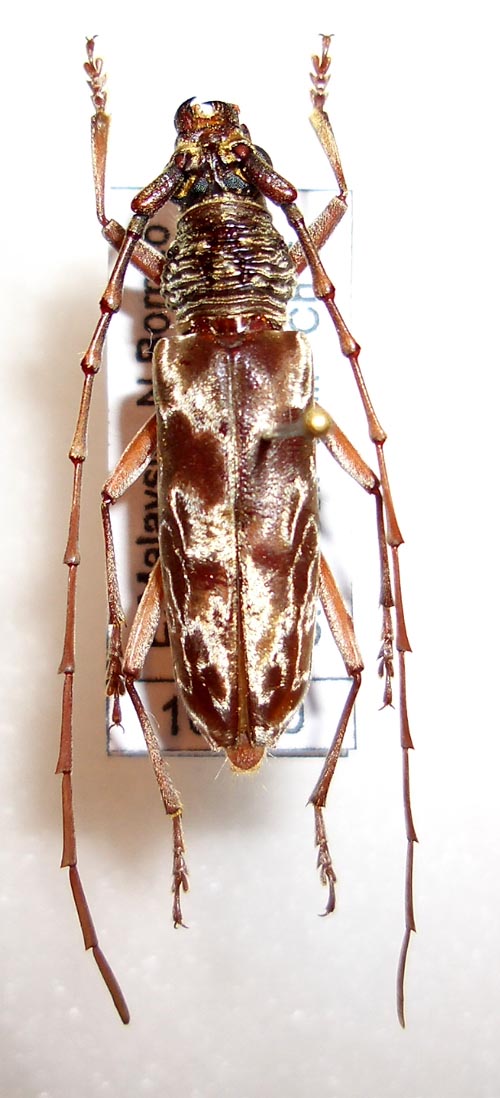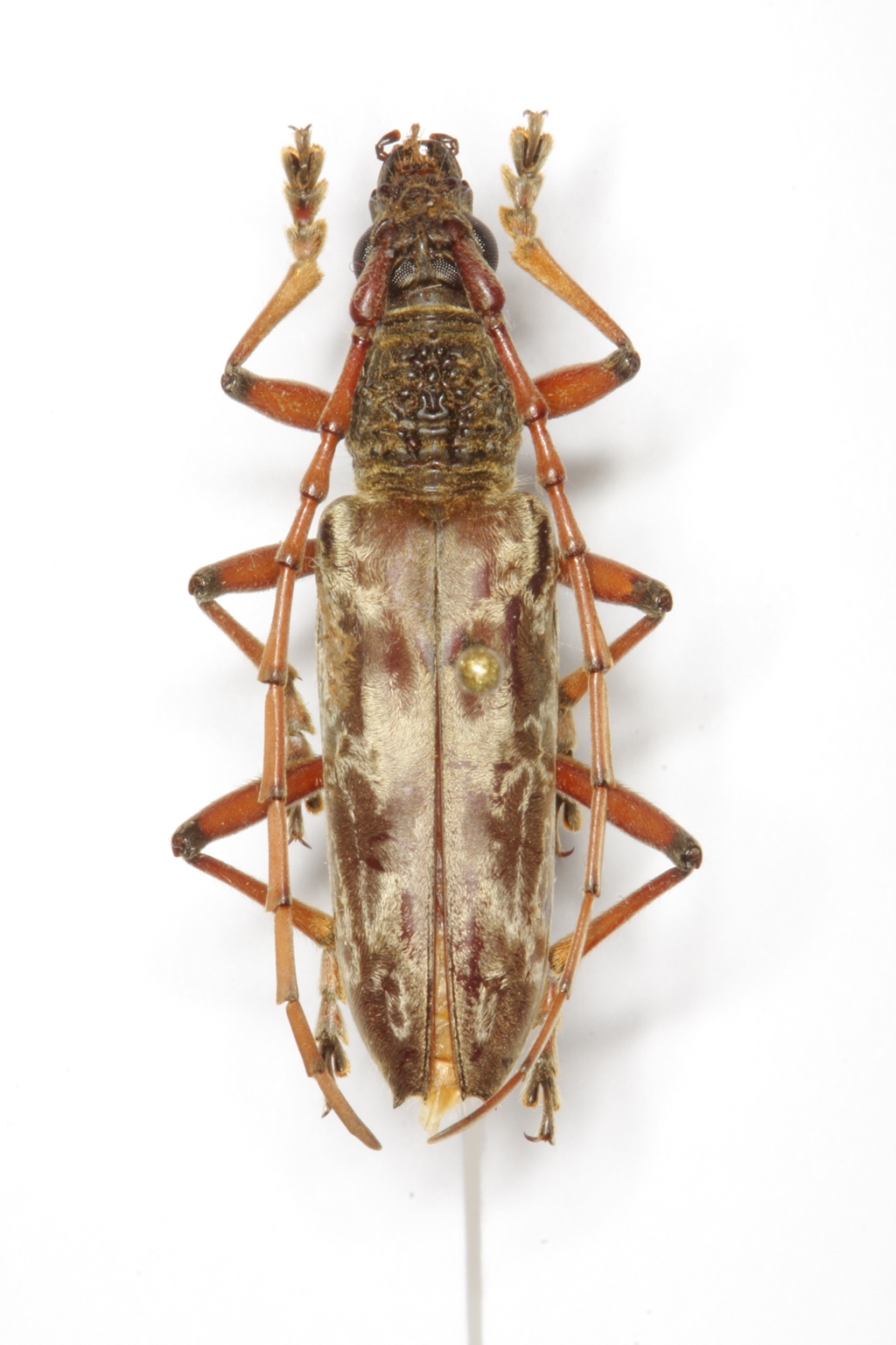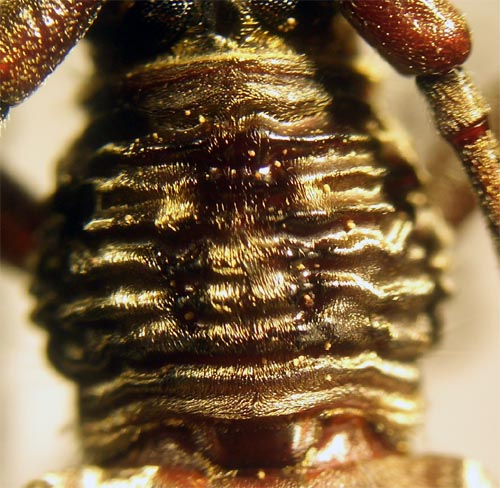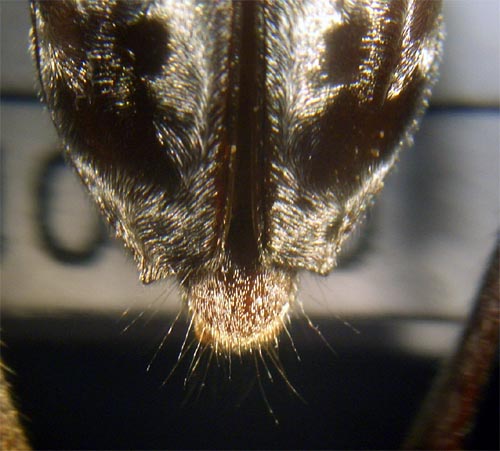| Author |
 Topic Topic  |
|
|
Sergi
Member Rosenbergia
   
Spain
1748 Posts |
 Posted - 19/12/2014 : 15:31:42 Posted - 19/12/2014 : 15:31:42



|

97.96áKB
From Borneo, Trus Madi, Sabah.
Size: 25 mm |
|
|
dryobius
Member Rosenbergia
   
USA
1889 Posts |
 Posted - 19/12/2014 : 17:17:40 Posted - 19/12/2014 : 17:17:40



|
| This appears to be an Aeolesthes, but I can't identify it from the picture. I have nearly all of the Cerambycini recorded from Sabah, and I can't find a good comparison. |
 |
|
|
Sergi
Member Rosenbergia
   
Spain
1748 Posts |
 Posted - 19/12/2014 : 17:28:52 Posted - 19/12/2014 : 17:28:52



|
| Hi Dan, I thought maybe in genus Dymasius.. |
 |
|
|
dryobius
Member Rosenbergia
   
USA
1889 Posts |
 Posted - 20/12/2014 : 03:08:54 Posted - 20/12/2014 : 03:08:54



|
| I don't think I can identify this one from the photo.. It is somewhat different from Dymasius flavimembris. It could be a Dymasius, and Dymasius has quite a bit of variety in the genus. And most Aeolesthes are larger than 25 or 30 mm. It has some resemblance to Aeolesthes curticornis Hudepohl, 1988, but I have a photo of that holotype and it is different in my opinion. There are some species which occur in West Malaysia, Sumatra, and Java that probably also occur in Borneo which I am not familiar with. Both Aeolesthes and Dymasius need a lot of review. |
 |
|
|
dryobius
Member Rosenbergia
   
USA
1889 Posts |
 Posted - 20/12/2014 : 03:27:55 Posted - 20/12/2014 : 03:27:55



|
| I think you have a specimen of D. flavimembris. I have several specimens like the one in this photo which I am posting now, but I have one specimen which has the dark (black) area almost totally absent from the apices of the femora, like your specimen. The apex of the elytra is not easily visible in your photograph, but it should be like the specimen in my photo. Lastly, the ridges and sculpturing on the pronotum should be very similar but do not have to be absolutely identical. The shiny pubescence on the elytra of the two specimens is very similar. |
 |
|
|
dryobius
Member Rosenbergia
   
USA
1889 Posts |
 Posted - 20/12/2014 : 03:29:18 Posted - 20/12/2014 : 03:29:18



|

413.98áKB
Dymasius flavimembris Hudepohl, determined by C. Holzschuh |
 |
|
|
Sergi
Member Rosenbergia
   
Spain
1748 Posts |
 Posted - 20/12/2014 : 10:41:53 Posted - 20/12/2014 : 10:41:53



|
 
58.85áKB
Here two detailed pictures of the pronotum and elytra apex.
Thank you very much Dan for your help!! |
 |
|
|
Sergi
Member Rosenbergia
   
Spain
1748 Posts |
 Posted - 20/12/2014 : 10:44:38 Posted - 20/12/2014 : 10:44:38



|
| I see that the elytral apex is quite different for two specimens... |
 |
|
|
Francesco
Forum Admin
    
Luxembourg
9511 Posts |
 Posted - 27/12/2014 : 22:31:03 Posted - 27/12/2014 : 22:31:03




|
The first species belongs evidently to Aeolesthes (induta or holosericea).
You should identify it following this topic. |
 |
|
| |
 Topic Topic  |
|


